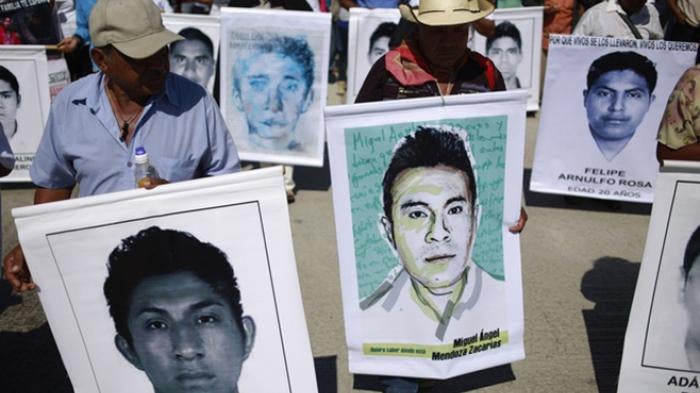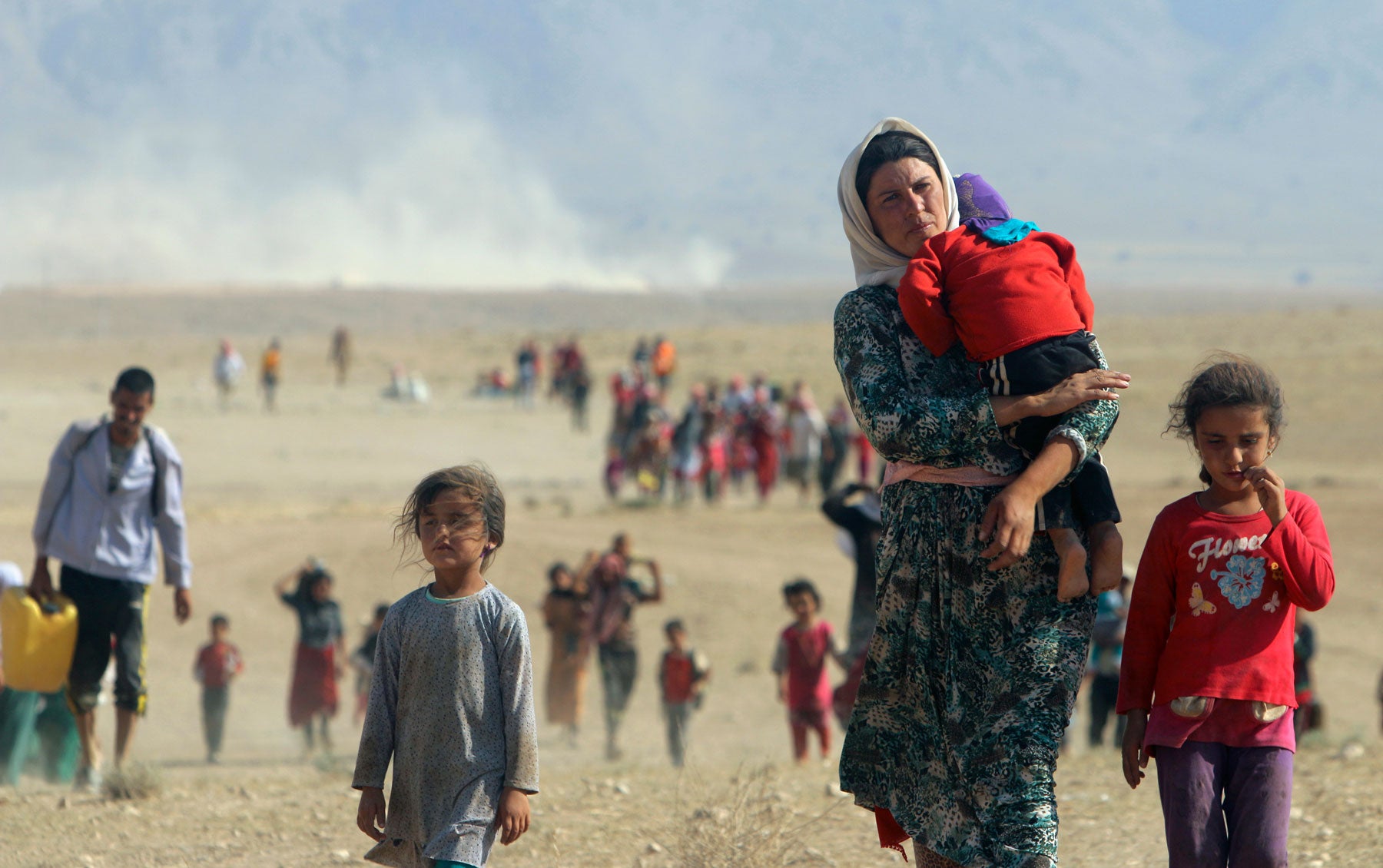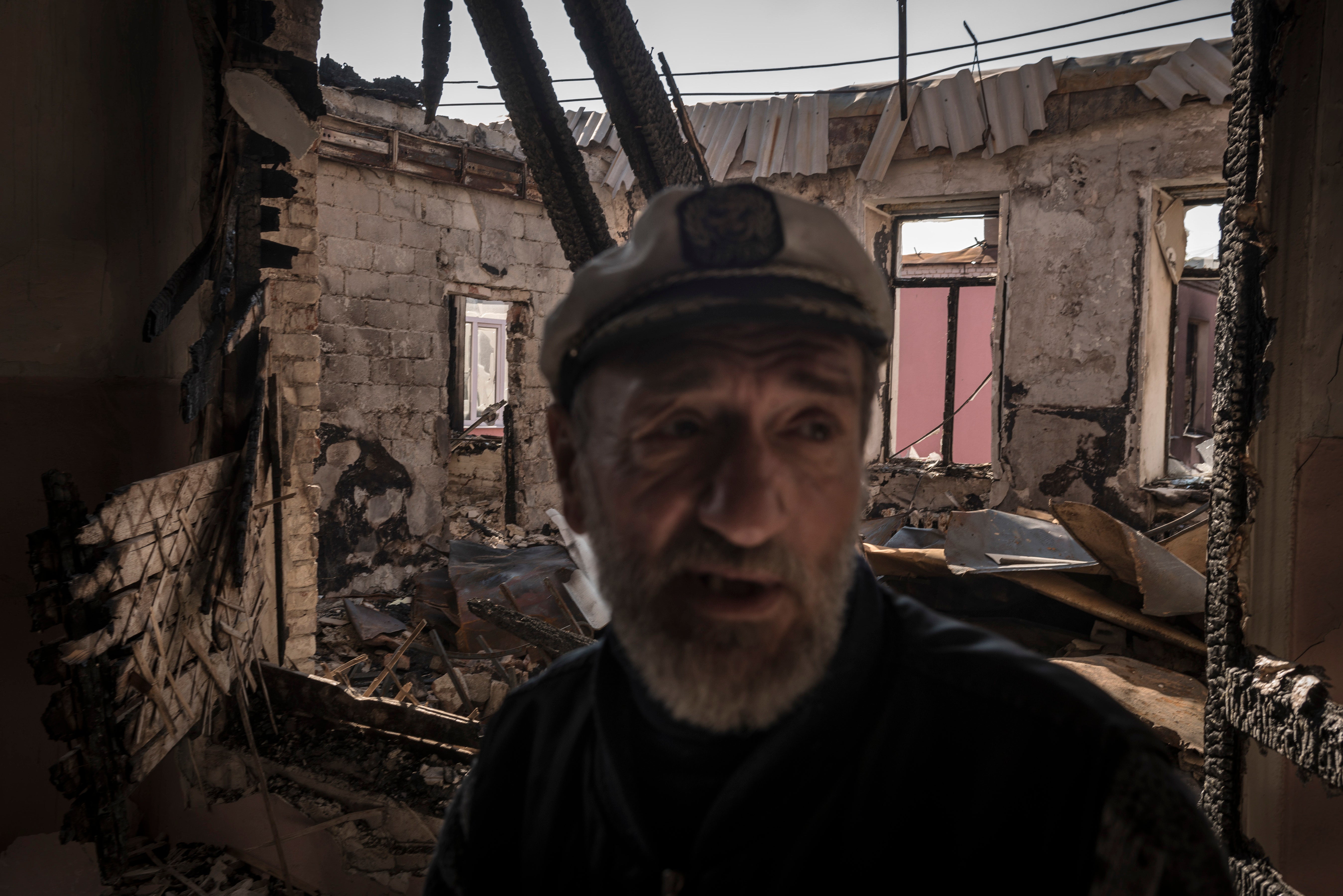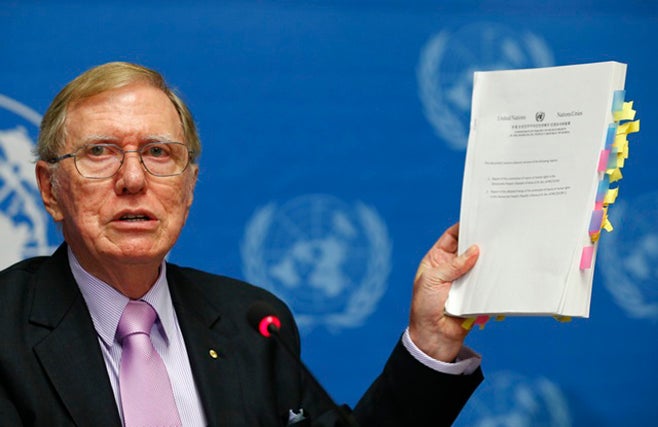Upon taking office in December 2012, President Enrique Peña Nieto acknowledged that the “war on drugs” launched by his predecessor Felipe Calderón had led to serious abuses by the security forces. In 2014, the administration adopted a National Human Rights Program outlining its policies for the next 4 years, and recognized that the whereabouts of more than 22,000 people who had been reported missing since 2006 remained unknown.
The forced disappearance of 43 students in September in Iguala, Guerrero, led to widespread protests calling on the government to determine the whereabouts of the missing students, and address the broader problem of corruption and abuse that the case exposed.
Yet the government has made little progress in prosecuting widespread killings, enforced disappearances, and torture committed by soldiers and police in the course of efforts to combat organized crime, including during Peña Nieto’s tenure.
Other ongoing problems include restrictions to press freedoms, abuses against migrants, and limits on access to reproductive rights and health care.
Enforced Disappearances
Mexico’s security forces have participated in widespread enforced disappearances since former President Calderón (2006-2012) launched a “war on drugs.” Members of all security forces continue to carry out disappearances during the Peña Nieto administration, in some cases, collaborating directly with criminal groups.
In September, approximately 30 municipal police officers in Iguala, Guerrero, opened fire without warning on three buses carrying about 90 students from a rural school that trains teachers. During that incident and two subsequent ones in which unidentified people opened fire on the students and others, more than 15 people were injured and 6 were killed. The policemen ordered students in the third bus to leave the vehicle, beat them, and forced them at gunpoint to lie down on the roadside before driving away with them in at least three police cars.
At time of writing, the whereabouts of 42 students remained unknown. The Attorney General’s Office claimed that, based on the confession of three alleged perpetrators, the students were handed over to members of a criminal group, who killed them, burnt their bodies, and threw them in a municipal dump. The DNA of a forty-third student was identified among the remains that the Attorney General’s Office reports having found in the area. More than 80 people were detained and charged for their alleged involvement in these incidents.
In August 2014, the government acknowledged that the whereabouts of over 22,000 people who had gone missing since 2006 remained unknown, but failed to disclose corroborating evidence, or information on how many of these cases are alleged enforced disappearances. Mexico’s National Human Rights Commission (CNDH) has issued 12 reports documenting the enforced disappearance of 30 victims during this time, and found evidence of probable participation of state agents in approximately 600 other disappearances cases.
As of April, according to official information, no one had been convicted for an enforced disappearance committed after 2006. Prosecutors and police routinely fail to carry out basic investigative steps to identify those responsible for disappearances, often blaming victims, and telling their families to investigate. Families of the disappeared may lose access to basic social services that are tied to the victim’s employment, such as child care.
The government has pursued potentially promising initiatives to find people who have gone missing, but they have produced limited results. In 2013, it created a unit in the Federal Prosecutor’s Office to investigate disappearances, and locate people who had gone missing. As of August 2014, the unit had found 87 people. The implementation of a comprehensive database donated by the International Committee of the Red Cross to cross-reference information on missing people and unidentified bodies, remained pending at time of writing.
Military Abuses and Impunity
Mexico has relied heavily on the military to fight drug-related violence and organized crime, leading to widespread human rights violations. Since 2006, the CNDH received approximately 9,000 complaints of abuse by the army, and issued reports in over 100 cases in which it found that army personnel had committed serious human rights violations.
In April, Congress reformed the Code of Military Justice, stating that abuses committed by members of the military against civilians should be handled by the ordinary criminal justice system. Previously, these cases had been handled by the military justice system, which had routinely failed to hold members of the military accountable for abuses. Under the reform, abuses against soldiers remain subject to the military justice system, which lacks independence and transparency.
In June, military personnel opened fire on a group of 22 civilians who were inside an empty warehouse in Tlatlaya, state of Mexico, killing all of them. One soldier was injured during the incident.
Accounts from witnesses and a report by the CNDH said that at least 12 civilians were extrajudicially executed. State prosecutors detained two of the three surviving witnesses, beat them, repeatedly asphyxiated them with a bag, and threatened them with sexual abuse to force them to confess to having links to people killed in the incidents, and to say that the military was not responsible for the killings, according to the CNDH. They also threatened and mistreated a third witness, and forced the three witnesses to sign documents they were not allowed to read.
In September, the military justice system detained 24 soldiers and one lieutenant who allegedly participated in the incidents, and accused 8 of them of breaches of military discipline. Subsequently, the Attorney General’s Office charged seven soldiers and the lieutenant with“undue exercise of public service. Three of the soldiers were also charged with “abuse of authority, aggravated homicide of eight people, and altering the crime scene.” The lieutenant was also charged with cover-up.
Torture
Torture is widely practiced in Mexico to obtain forced confessions and extract information. It is most frequently applied in the period between when victims are arbitrarily detained and when they are handed to prosecutors, when they are often held incommunicado at military bases or other illegal detention sites. Common tactics include beatings, waterboarding, electric shocks, and sexual torture. Many judges continue to accept confessions obtained through torture, despite the constitutional prohibition of such evidence.
Criminal Justice System
The criminal justice system routinely fails to provide justice to victims of violent crimes and human rights violations. Causes of this failure include corruption, inadequate training and resources, and the complicity of prosecutors and public defenders.
In 2013, Mexico enacted a federal Victims Law intended to ensure justice, protection, and reparations for victims of crime. At time of writing, the executive had yet to adopt implementing regulations that are necessary to provide reparations to victims. As of March 2014, only six states had enacted legislation in compliance with the Victims Law.
In 2008, Mexico passed a constitutional reform to transform its inquisitorial, written justice system to an adversarial, oral one by 2016. As of November, only 3 states had fully implemented the reform, while 13 had partially transitioned to the new system.
The reform also introduced the provision of arraigo, which allows prosecutors, with judicial authorization, to hold organized crime suspects for up to 80 days before they are charged with a crime. In February, the Supreme Court ruled the provision should only be applied in cases of organized crime. A proposal to reduce the maximum time that such individuals can be held without charge to 35 days was pending before the Senate at time of writing.
Self-Defense Groups
The failure of law enforcement has contributed to the emergence of armed citizen self-defense groups in many parts of the country.
Following concerns about some groups’ unregulated security actions, self-defense groups in Michoacán state signed an agreement with the government in April stipulating that their members would register their weapons and incorporate into local security forces. At time of writing, there had been no independent assessment of the agreement’s implementation, nor its compliance with the vetting procedures for security forces that are required by Mexican law.
Prison Conditions
Prisons are overpopulated, unhygienic, and fail to provide basic security for most inmates. Prisoners who accuse guards or inmates of attacks or other abuses, have no effective system to seek redress. In the majority of prisons, the inmate population is controlled by organized crime, and corruption and violence are rampant.
Freedom of Media
Journalists, particularly those who report on crime or criticize officials, face harassment and attacks. According to the Special Prosecutor’s Office for Crimes against Freedom of Expression, between 2000 and May 2014, 102 journalists were killed, and 24 were disappeared—including 2 who were killed in 2014.
Authorities routinely fail to adequately investigate crimes against journalists, often preemptively ruling out their profession as a motive. As of May, the Special Prosecutor’s Office was conducting 555 investigations of crimes against journalists or media outlets, and had presented charges in 61 cases.
Journalists are often driven to self-censorship by attacks carried out both by government officials and by criminal groups, while the under-regulation of state advertising can also limit media freedom by giving the government disproportionate financial influence over media outlets.
Women’s and Girls’ Rights
Mexican laws do not adequately protect women and girls against domestic and sexual violence. Some provisions, including those that make the severity of punishments for some sexual offenses contingent upon the "chastity" of the victim, contradict international standards. Women and girls who have suffered these types of human rights violations generally do not report them to authorities, while those who do generally face suspicion, apathy, and disrespect.
In 2008, the Supreme Court affirmed the constitutionality of a Mexico City law that legalized abortion in the first 12 weeks of pregnancy. Since then, 17 states have legislated to recognize the right to life from the moment of conception.
In 2010, the Supreme Court ruled that all states must provide emergency contraception and access to abortion for rape victims. However, in practice many women and girls face serious barriers to accessing abortions after sexual violence, including inaccurate information and intimidation by officials.
Sexual Orientation and Gender Identity
In 2010, the Supreme Court recognized the right of same-sex couples in Mexico City to adopt children and to marry. It ruled that all 31 Mexican states must recognize same-sex marriages that take place in Mexico City, but did not require states to perform same-sex marriages in their respective jurisdictions. In January 2014, the Supreme Court also ruled that same-sex couples can claim the same social security and health insurance benefits that heterosexual couples receive from government entities. In September, Coahuila became the first state to legalize same-sex marriage.
Palliative Care
The Mexican government took a number of important steps to implement legal provisions granting people who are terminally ill access to palliative care. It enacted a new regulation in November 2013, announced an overhaul of drug control regulations to facilitate access to morphine and other opioid analgesics, added partial coverage of palliative care to a government insurance scheme for the poor, and announced an effort to develop a national palliative care strategy. Tens of thousands of patients require end-of-life care in Mexico every year but only a small minority can access it in practice.
Migrants
Hundreds of thousands of undocumented migrants, including unaccompanied children and families, pass through Mexico each year and many are subjected to grave abuses en route at the hands of organized crime, migration authorities, and security forces. A 2013 report by the Inter-American Commission of Human Rights (IACHR) found that “robberies, extortion, kidnappings and physical and psychological assaults, sexual abuse, murders and disappearances to which [migrants] fall victim … have taken a dramatic turn for the worse” in recent years.
In April, approximately 300 Central American migrants and 3 rights defenders accompanying them were allegedly attacked and forcibly detained by immigration and police officials in Tabasco, according to the IACHR.
Authorities have not taken adequate steps to protect migrants, or to investigate and prosecute those who abuse them. The government has also failed to implement protective measures granted by national and international human rights bodies in favor of migrant shelters’ staff, who face threats and harassment from criminal groups and officials.
Labor Rights
The dominance of pro-management unions continues to obstruct legitimate labor-organizing activity. Independent unions are often blocked from entering negotiations with management, while workers who seek to form independent unions risk losing their jobs. A 2012 labor law failed to address the lack of transparency and democracy in the powerful pro-management unions, and failed to protect workers’ right to form independent unions and carry out collective bargaining.
Human Rights Defenders
Human rights defenders and activists continue to suffer harassment and attacks, often in the context of opposition to infrastructure, or resource extraction “mega-projects.” In many cases, there is evidence that state agents are involved in aggressions against them.
In 2012, Mexico enacted a law to protect human rights defenders and journalists. The protection mechanism created by the law, however, has not been effectively implemented, with protective measures slow to arrive, insufficient, or incomplete in some cases.
Key International Actors
The United States has allocated over US$2 billion in aid to Mexico through the Merida Initiative, an aid package agreed upon in 2007 without a year cap, to help Mexico combat organized crime. Fifteen percent of select portions of the assistance can be disbursed only after the US secretary of state reports that the Mexican government is meeting human rights requirements. However, the impact of these requirements has been undermined by the fact that the US State Department has repeatedly reported to the US Congress that they are being met, despite overwhelming evidence to the contrary, often citing vague and incomplete progress towards meeting the requirements, leading Congress to release the funds.
In April-May, the UN special rapporteur on torture visited Mexico and found that torture is “generalized.” In August, the UN special rapporteur on extrajudicial, summary or arbitrary executions reported that widespread abuses committed with impunity by security forces during the “war on drugs” seriously threatened the right to life. In September, the UN high commissioner for human rights expressed “very serious concern” over attacks against journalists, and urged the government to adopt measures to protect them.
In Mexico, most people with disabilities live in poverty, leading to increased barriers to education, employment, and health care. In its October 2014 review of Mexico's compliance with the UN Convention on the Rights of Persons with Disabilities, the treaty's monitoring body raised concerns about restrictions on the legal capacity of persons with disabilities, violence faced by women and children with disabilities (including involuntary sterilization), institutionalization of children with disabilities and physical coercion, and isolation of people with disabilities in psychiatric hospitals.






